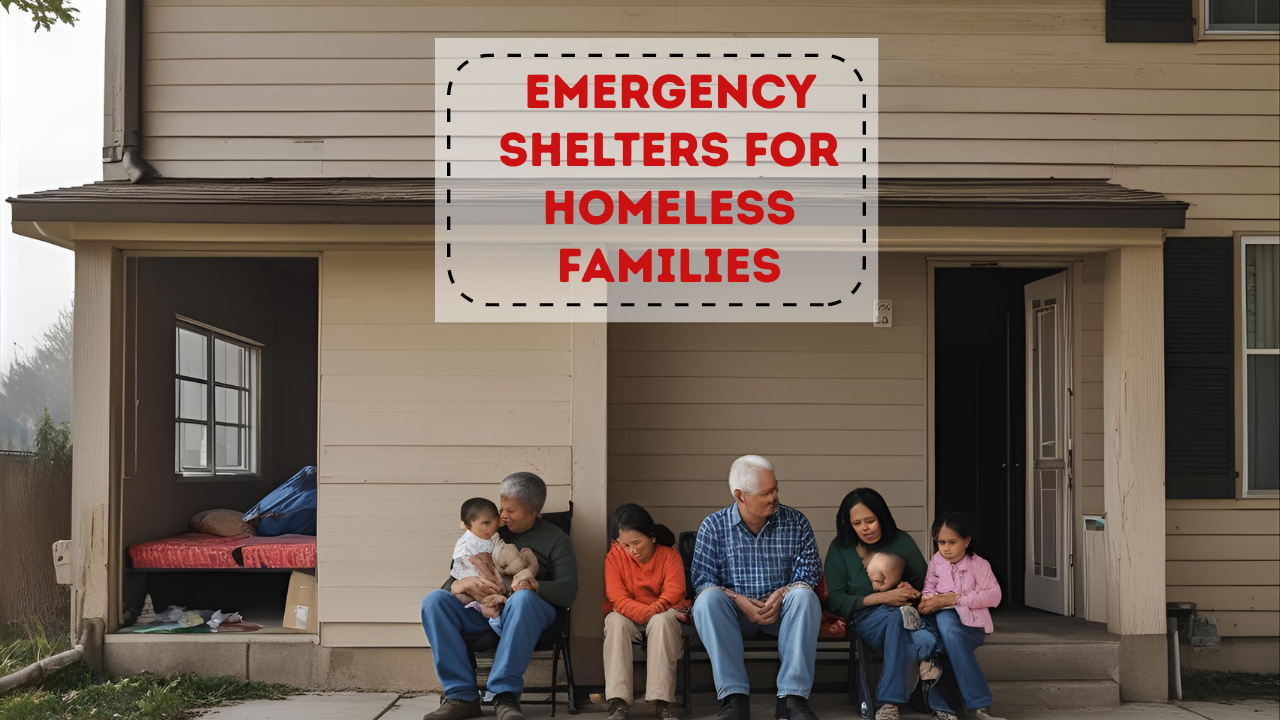Homelessness is a growing concern in many parts of the world, affecting individuals and families from all walks of life. Job loss, domestic violence, mental health challenges, or sudden financial hardship can push people into vulnerable situations where finding a safe place to sleep becomes a daily struggle. In these moments, emergency shelters play a vital role in offering immediate support, protection, and a pathway toward stability.
This article explores what emergency shelters are, who can access them, what services they offer, and how individuals and families can seek help when they have nowhere else to turn.
Table of Contents
- What Are Emergency Shelters?
- Who Can Access Emergency Shelters?
- Services Provided by Emergency Shelters
- Types of Shelters: What’s Available
- How to Find a Shelter Near You
- What to Expect When You Arrive
- Moving Beyond the Shelter: Long-Term Support
- Final Thoughts: A First Step Toward Stability
1. What Are Emergency Shelters?
Emergency shelters are temporary housing facilities that provide immediate accommodation for people experiencing homelessness or displacement. They are often the first point of contact for individuals and families seeking refuge during a crisis.
Shelters are typically operated by government agencies, nonprofit organizations, faith-based groups, or community coalitions. Their main goal is to offer safety and basic needs—such as a bed, meals, and hygiene facilities—while connecting individuals to further support.
2. Who Can Access Emergency Shelters?
Emergency shelters are open to a wide range of people facing housing crises. This includes:
- Families with children
- Single adults
- Survivors of domestic violence
- Youth and teenagers
- Elderly individuals
- People with mental health or substance use issues
Many shelters have specific programs for different groups. For example, some facilities may cater exclusively to women and children, while others focus on veterans or LGBTQ+ youth. In most cases, individuals must demonstrate an urgent need for housing, though documentation requirements vary by location.
3. Services Provided by Emergency Shelters
Emergency shelters do more than just provide a bed for the night. Many offer a range of critical services to help individuals transition out of homelessness, including:
- Daily meals and clean water
- Toilets, showers, and laundry access
- Case management and counseling
- Assistance with securing permanent housing
- Job training and employment services
- Healthcare referrals and mental health support
- Legal aid and benefits enrollment
These services aim to stabilize individuals in crisis and guide them toward long-term recovery and self-sufficiency.
4. Types of Shelters: What’s Available
There are several different kinds of shelters, each designed to meet specific needs:
a. General Emergency Shelters
Open to anyone in need, these facilities offer short-term stays and basic services.
b. Family Shelters
Designed for parents and their children, family shelters provide more privacy and child-focused support, such as education and childcare.
c. Domestic Violence Shelters
These are confidential, secure locations for survivors fleeing abusive situations. They often include trauma counseling and legal advocacy.
d. Youth Shelters
Targeted toward teenagers and young adults, these shelters address the unique needs of young people, including education and life skills training.
e. Faith-Based Shelters
Operated by religious organizations, these shelters may include spiritual support as part of their care services.
5. How to Find a Shelter Near You
Finding a shelter is easier today thanks to various local and national resources. You can:
- Call 2-1-1, a free and confidential service that connects people with local housing resources
- Contact local social services or city housing departments
- Use online tools such as the Homeless Shelter Directory
- Visit local churches, mosques, temples, or community centers, many of which have information on nearby shelters
- Reach out to nonprofit organizations like The Salvation Army, Red Cross, or Coalition for the Homeless
Emergency shelters often operate on a first-come, first-served basis, so calling ahead or arriving early is recommended.
6. What to Expect When You Arrive
When you arrive at a shelter, you’ll typically go through an intake process. This may include:
- Providing basic personal information
- Explaining your current situation
- Undergoing a health screening (especially post-COVID)
- Receiving a list of house rules and safety guidelines
You’ll be assigned a bed or sleeping space, and depending on the shelter, you may receive toiletries, clean clothing, and meal vouchers. Some shelters also offer lockers or storage space for your belongings.
7. Moving Beyond the Shelter: Long-Term Support
Emergency shelters are just the first step in the journey to permanent housing. Many centers work closely with social workers and case managers to help you access:
- Transitional housing programs
- Affordable housing listings
- Rental assistance or housing vouchers
- Job placement and training services
- Healthcare and addiction treatment programs
By creating a structured plan, shelters can help individuals and families regain independence and avoid returning to homelessness.
8. Final Thoughts: A First Step Toward Stability
Homelessness is not a personal failure—it’s a complex issue often fueled by economic hardship, health challenges, or domestic violence. Emergency shelters provide a safe, judgment-free space where people can begin to rebuild.
If you or someone you know is facing homelessness, don’t wait. Reach out to a nearby shelter or support organization. Help is out there, and with the right support, a stable and hopeful future is within reach.

